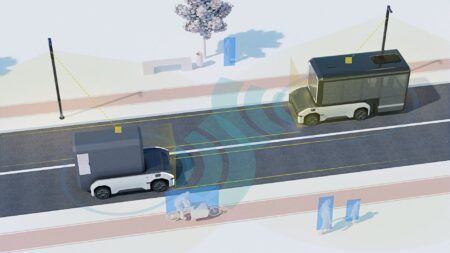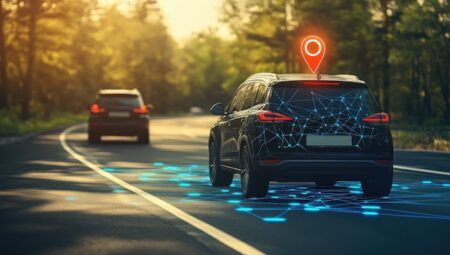Although they are often misused, the car horn is unquestionably a highly efficient safety device, allowing the driver to make others aware of their vehicle’s presence. However, if the vehicle is in autonomous mode, being driven by a machine, how does it decide when and where it is appropriate to use the horn?
In its monthly self-driving car project report for May, Google has revealed how it is developing an autonomous car horn system that aims to be polite, considerate, and will only sound when it makes driving safer for other road users. The company’s self-driving cars are designed to ‘see’ their surroundings through 360 degrees and not be distracted, unlike human drivers, who are not always fully aware of their surroundings. The self-driving software that is being developed is designed to recognize when honking may help alert other drivers to the vehicle’s presence, such as when a driver begins swerving into its lane or is backing out of a blind driveway. During testing, Google’s engineers ‘taught’ its vehicles to distinguish between potentially tricky situations and false positives, such as the difference between a car facing the wrong way during a three-point turn, and one that is about to drive down the wrong side of the road.
At first, the team only sounded the horn inside the vehicle, so that the vehicle would not confuse others on the road with an inappropriate beep. Each time the cars sound the horn, Google’s test drivers took note whether the beep was appropriate, and the feedback helped the engineering team refine the vehicle’s software further. As its honking algorithms improved, the company began broadcasting its car horn to the outside world. The team has even taught the vehicles to use different types of honks, depending on the current situation. If another vehicle is slowly reversing towards it, the car might sound two short, quieter toots as a friendly reminder to let the driver know the test car is behind. However, if there is a situation that requires more urgency, it will use one loud sustained sound.
The company’s goal is to teach its cars to honk like a patient, seasoned driver. As the vehicles and their software become more experienced horn users, Google hopes its cars will also be able to predict how other drivers respond to a toot, beep or honk in different situations. Ultimately, the cars will also ‘hear’ and respond to the horns of other vehicles.
Google is also working on the sound characteristics of its prototype self-driving electric vehicles to make them easy to distinguish from other vehicles on the road, and to alert cyclists and pedestrians, particularly those with visual impairments. The development team has designed a unique hum for the vehicles, so that those in the vicinity know what to expect. The prototype mimics the sound characteristics of traditional cars, such as increasing the pitch when it accelerates, and decreasing when it decelerates.




